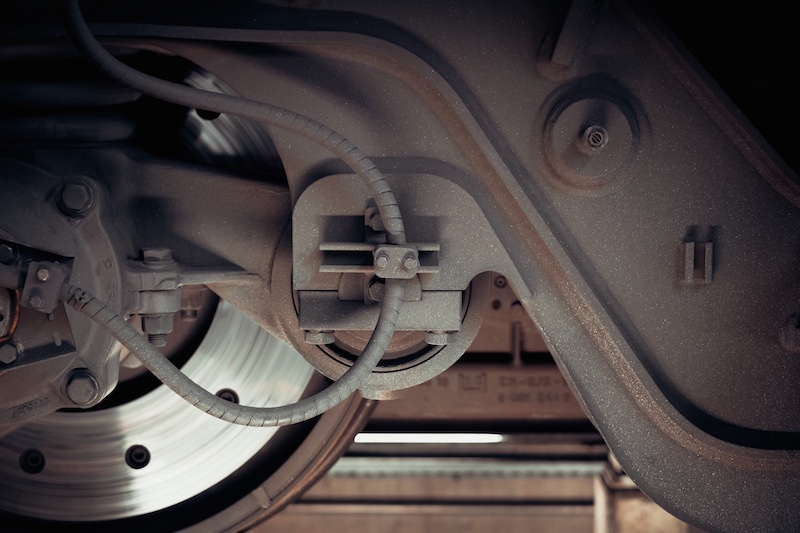
Source | Malte Luk
Every December, we all start thinking about what goals we want to achieve in the New Year, whether it's budgeting to save money, focusing on health and wellness or learning a new skill. The start of a new calendar gives a kind of motivation that can drive you to be a whole new person if you stick with it – but it's okay if you want to take things slow to avoid overwhelm. For that reason, we've compiled a list of DIY tasks that you can chip away at this New Year to help you reach your DIY goals. From something simple like changing your oil to more complex tasks like replacing your engine's ignition coils, we're here to ease you into 2023 by getting your car in shape while saving money and feeling empowered to reach your goals.
HOW TO CHANGE YOUR ENGINE OIL
Changing your engine's oil is one of the best preventative maintenance items to learn yourself and is relatively easy with the right tools and an oil change kit. In most cases, once you get the process down, you can change your oil in less than an hour.
First, you'll need to know what oil your car uses, which you can easily check by looking at your owner's manual, and it is also printed on your oil cap. In terms of types of oil, you want to follow the manufacturer's recommendation unless you want to upgrade to synthetic or a blend from conventional. Always make sure to include a new oil filter as well to make sure everything works as intended.
As far as the tools required, you'll need your motor oil and oil filter, an oil drain pan to catch the oil, a funnel to pour the oil, an oil drain plug gasket or crush washer for when you reinstall the drain plug, a properly sized wrench to remove your drain plug and a jack and jack stands. Make sure you also have enough shop towels for any spills or mess, and always wear safety glasses and gloves to stay clean.
For the individual steps, read through our step-by-step guide, and you'll be all set on your way to changing your oil in the garage or driveway.
HOW TO CHANGE BRAKE PADS
If your holiday music has been getting an unwelcome accompaniment from some squeaky brakes, it might be time to change your brake pads. Luckily, this is a great project for new DIYers to get their hands dirty and feel accomplished. At just about an hour per axle, you can stop that squeaking in the comfort of your own garage.
Before you start wrenching, make sure you have everything you need. Of course, you'll require brake pads and rotors in order to do a full replacement. Replacing the rotors is an often overlooked but important step to get the best performance from the new pads. Next, you'll need wheel bearing grease to make sure everything works properly. Don't forget a drip tray for brake fluid, a C-Clamp or caliper spreader so you can push the piston back, some basic hand tools and a torque wrench to ensure everything is tight. You'll also need your jack and jack stands, safety glasses, gloves and enough shop towels and brake cleaner. Some things you might not expect to need are a bungee cord or a 24-inch piece of wire. This helps secure the caliper out of the way so you can work while avoiding it hanging from the brake lines.
Once you have all your tools and materials, follow our step-by-step guide for everything you need to do from start to finish, with clear instructions and photo examples to make sure you're getting everything right. Once you're done, take a moment to feel the satisfaction of taking your car's maintenance into your own hands.
HOW TO USE A CLAY BAR TO RETURN YOUR VEHICLE'S PAINT TO SHOWROOM CONDITION
Maybe you have a friend that takes care of your car's maintenance, or you're just not ready to get to wrenching yet. There are plenty of other great DIY tasks to add to your New Year's Resolution and have your car shining like it just came off the lot in 2023. One of the best things you can learn is how to use a clay bar. It may take a bit of time, but the results are undeniable. Using a clay bar will make your car look and feel brand new.
A clay bar has an elastic resin compound that is specially engineered to lift contaminants like road tar, bugs, paint overspray and other grime that can make your paint feel rough. Without a long list of tools and materials, you'll just need a clay bar kit, towels and some detailing products.
Before you start working on your paint, make sure you get a suitable car wash soap and give your car a good wash, making sure you get rid of anything that's not stuck to the paint. You'll want to find a nice sheltered spot like your garage or carport to ensure nothing falls on your car while you're working. Inside your clay bar kit, you'll find the clay bar and a lubricant that will help the clay slide easily across the body of your car.
The process is as simple as spraying the detailing lubricant and sliding the clay bar back and forth with gentle pressure to remove the grit and contaminants from the paint. If you feel any resistance, add more lubricant and continue working. For more details and answers to any questions you might have, follow our step-by-step guide to see the whole process from start to finish.
HOW TO USE A CODE READER
Knowing exactly why your car's check engine light or any other light is on is a huge help when looking to fix your ride yourself. Your car's internal computers control the lights on your dash and illuminate when an issue or sensor failure creates or throws a code. A check engine light can turn on for multiple different reasons, making a diagnostic visit all the more important to find out what's causing it. Diagnostics at a dealership or local shop can sometimes be $100 or more, which might be saved by knowing what's wrong before heading into the shop. The best way to find out what each light is for is with a code reader.
Without any technical steps, all you have to do is plug your code reader into the 16-pin OBD-II port, located under your steering column, most often on the lower left side. The code reader and your vehicle's ECU, or engine control unit, use the same programming language and are able to communicate, so the reader understands what system is triggering the light and tells you in the form of a code.
These codes are usually a combination of a letter followed by numbers, like the code for a failed O2 sensor, “P0162," or similar. With this, you can either look up the code online or search our Advice & How-tos section to find an answer and fix yourself or let your mechanic know which code is displaying. Depending on which model code reader you have, it may also tell you a brief description like “oxygen sensor 1, bank 1." And instead of spending time digging through online search results, you can buy the oxygen sensor and install it. Doing so will solve the check engine light and prevent any further damage that delaying the repair could cause.
A code reader can also help clear these codes after any repairs, preventing a check engine light from appearing after you've solved the issue. With many code readers priced at $150 or less, this is a great tool to learn to use to increase your DIY knowledge and confidence as you start the New Year. If you want to learn more about how to use a code reader, check out our full guide on code readers here.
HOW TO REPLACE IGNITION COILS
For those who've already mastered much of what's suggested above, we have a task that might be a little more your speed. If you have ever noticed a strange feeling like your engine “skipped a beat" or has a rough idle while showing your check engine light, you might have a misfire in one of your engine's cylinders. Misfires can have several causes, but one common problem is a bad ignition coil. Luckily, this is usually a fairly easy job.
Ignition coils provide the high voltage required for the spark plug to fire in each engine cylinder, creating the combustion in your internal combustion engine. Ignition coils are either linked to the plugs via spark plug cables, or each coil is directly connected on top of each spark plug—the latter is a coil-on-plug (COP) or coil pack. A coil pack is typically a set of coils all in one unit that can provide a spark to each spark plug wire, while coil-on-plug systems would be one individual coil over each spark plug. The ignition coil fires at exactly the right time because the crankshaft position sensor reports the crank position and speed to the PCM, which determines which plug should fire next and when and transmits a signal to the appropriate coil.
While engine work might be a little daunting, this task can actually be quite easy and should take about an hour to complete. First, you'll need a new set of ignition coils to replace the worn-out coils, as well as some dielectric grease to help keep water out of the connection or any unwanted sticking. In terms of tools, you'll just need a ratchet and socket set in the proper size, some gloves and your vehicle's repair manual. Be sure to disconnect your battery before starting any work to avoid being shocked or injured.
Keep in mind that replacing coils on an engine where one bank faces the firewall can be more challenging. Therefore, it's a good idea to replace all of the coils since some components may have to come off to reach only one. Doing so avoids future replacements – if one coil fails, it's possible others may follow. And since replacing coils exposes the spark plugs, this is a logical time to replace them if they are due.
For more information and detailed instructions, follow our step-by-step guide. Your engine will be running smoothly, and you'll have a new feeling of accomplishment by finally tackling an engine repair on your own.
We hope these suggestions inspired you to take on new DIY projects in the New Year and that 2023 brings a new passion to auto repairs. If you're looking for a task or skill that wasn't mentioned here, there are many more simple DIY tasks to take on for your New Year's Resolution in the Advice & How-Tos section of our website.
Do you have any exciting DIY projects to restore your ride in 2023? Let us know in the comments below.







